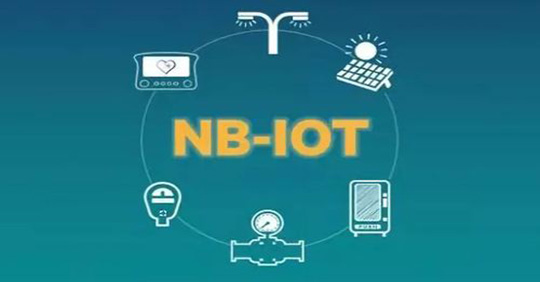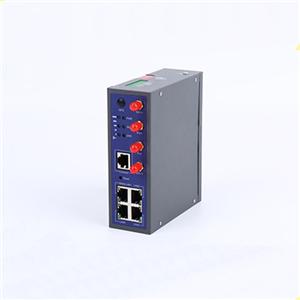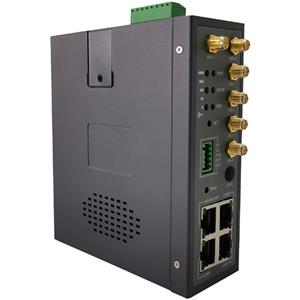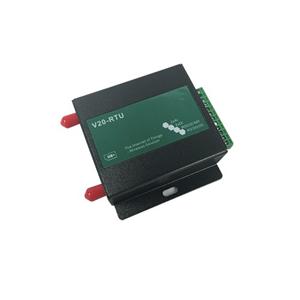5G के तहत नैरोबैंड इंटरनेट ऑफ थिंग्स
5G के तहत नैरोबैंड इंटरनेट ऑफ थिंग्स

कुछ लोग कहते हैं कि इंटरनेट का दूसरा भाग इंटरनेट ऑफ थिंग्स युग है। जरूरी नहीं कि यह गलत बयान हो।
हाल ही में, उद्योग और सूचना प्रौद्योगिकी मंत्रालय के मार्गदर्शन में, तीन प्रमुख दूरसंचार ऑपरेटरों और उद्यमों जैसे कि Huawei ने संयुक्त रूप से ऑनलाइन लाइव प्रसारण के माध्यम से 5G NB-IoT "100 मिलियन" यात्रा उद्योग शिखर सम्मेलन की मेजबानी की। बैठक में उद्योग और सूचना प्रौद्योगिकी मंत्रालय के सूचना और संचार विकास विभाग के उप निदेशक लियू युलिन ने कहा कि नए बुनियादी ढांचे पर देश के जोर ने उभरते उद्योगों जैसे 5 जी और इंटरनेट ऑफ थिंग्स के लिए विकास के बड़े अवसर लाए हैं। विभिन्न इंटरनेट ऑफ थिंग्स कनेक्शन शुरू करने के लिए एनबी-आईओटी, 4 जी, 5 जी और अन्य प्रौद्योगिकी सीढ़ी का उपयोग करने वाले विकास पैटर्न के गठन में तेजी लाना आवश्यक है।
व्यापक व्यापार संभावनाओं के साथ IoT शाखा प्रौद्योगिकी
5G की अवधारणा लंबे समय से लोगों के मन में गहराई से निहित है, और वास्तव में NB-IoT क्या है, कुछ लोग अभी तक स्पष्ट नहीं हो सकते हैं।
NB-IoT नैरोबैंड इंटरनेट ऑफ थिंग्स का संक्षिप्त नाम है। तथाकथित नैरोबैंड इंटरनेट ऑफ थिंग्स एक सेलुलर नेटवर्क पर निर्मित इंटरनेट ऑफ थिंग्स को संदर्भित करता है जो केवल 180 किलोहर्ट्ज़ (kHz) बैंडविड्थ की खपत करता है। क्योंकि एक व्यापक क्षेत्र नेटवर्क में कम-शक्ति वाले उपकरणों का समर्थन करने वाले सेलुलर डेटा लिंक को कम-बिजली व्यापक क्षेत्र नेटवर्क (LPWAN) भी कहा जाता है।
"वर्तमान में, अधिकांश नैगमबैंड इंटरनेट ऑफ़ थिंग्स 2G / 3G / 4G सेलुलर संचार प्रौद्योगिकी का उपयोग करता है, जो 1GHz के नीचे सेलुलर संचार के साथ साझा किए गए लाइसेंस आवृत्ति बैंड के तहत और अंतर्राष्ट्रीय मानकीकरण संगठन 3GPP द्वारा समर्थित है।" इंस्टीट्यूट ऑफ साइबर अटैक एंड डिफेंस टेक्नोलॉजी, स्कूल ऑफ कंप्यूटर साइंस एंड टेक्नोलॉजी, बीजिंग इंस्टीट्यूट ऑफ टेक्नोलॉजी साइंस एंड टेक्नोलॉजी डेली के साथ एक साक्षात्कार में, चांग यान हुआज़ी ने कहा कि नैरो-बैंड इंटरनेट ऑफ थिंग्स एक कम बैंडविड्थ वाली इंटरनेट ऑफ थिंग्स और है। इंटरनेट ऑफ थिंग्स की एक शाखा के रूप में माना जा सकता है।
In September 2015, after the establishment of the third-generation cooperation project-3GPP RAN, the Narrowband Internet of Things received the attention and response of the vast majority of international operators, system equipment vendors, and terminal manufacturers. An Internet of Things branch communication standard with broad business prospects and uniformity worldwide.
Today, standing on the air of 5G, the narrow-band Internet of Things has been given a greater historical mission, will empower thousands of industries, and help realize the interconnection of all things. Liu Yulin said in a speech at the 5G NB-IoT "100 Million" Journey Industry Summit that as of the end of 2019, China had built more than 700,000 NB-IoT base stations, achieving continuous coverage of major cities and towns above the country, laying a foundation for the development of various applications Good network foundation.
Meet the needs of more than 70% of IoT scenarios
The reason why the narrowband Internet of Things has high hopes is determined by its own characteristics. Generally speaking, the narrowband Internet of Things has the characteristics of wide coverage, multiple connections, low power consumption and low cost.
Wide coverage will greatly improve the status quo of indoor coverage of the Internet of Things. In the same frequency band, the narrowband Internet of Things has a gain of 20dB compared to the existing network, which is equivalent to a coverage area of more than a hundred times enhanced; multi-connection means that its single sector can support 100,000 connections; low power consumption makes its terminal module standby time as long as 10 years; low cost refers to its low module cost, the cost of a single connection module can be reduced to 20-30 yuan.
"Because it is built on a cellular network, it can be directly deployed on a GSM (Global System for Mobile Communications) network, a UMTS (Universal Mobile Telecommunications System) network or an LTE (Long Term Evolution) network, which greatly reduces deployment costs and can be used on the existing network Smooth upgrade to quickly support industry market demand. "Yan Huaizhi said, the narrowband Internet of Things is considered to be one of the best solutions for the cellular network industry to deal with the Internet of Everything. The current application scenario is vertical industries such as public service or industrial control.
At the 5G NB-IoT "100 Million" Journey Industry Summit, Yang Tao, vice president of Huawei ’s China Carrier Business Department, stated that NB-IoT ’s features such as large connectivity, wide coverage, and low power consumption catered to more than 70% of IoT scenarios. demand.
At present, China's three major operators have achieved NB-IoT network construction and coverage in more than 300 cities, and provided billions of IoT special subsidies; at the same time, giant enterprises represented by Ali, Tencent, Huawei, Xiaomi, etc. It has also entered the Internet of Things.
Over the past three years, NB-IoT has achieved leapfrog development and has achieved scale implementation in multiple industries. In the four major areas of smart water meters, smart gas meters, smart firefighting, and smart electric bicycles, more than ten million narrow-band Internet of Things connections have been achieved; and smart manhole covers, smart door locks, tracking and positioning, smart street lights and other 10 industries have achieved more than Millions of narrowband IoT connections.
It is understood that in January 2020, the number of NB-IoT global connections exceeded 100 million; in February, the number of connections in China also exceeded 100 million. This marks that the NB-IoT industry has crossed the historical turning point and entered the stage of explosive growth. From the perspective of the distribution of operators, the number of NB-IoT connections of China Telecom and China Mobile has exceeded 40 million, while China Unicom has exceeded 10 million. It is expected that by the end of this year, the number of global 5G NB-IoT connections will double again.
Or trigger a disruptive innovation application revolution in many fields
Although the narrowband Internet of Things is developing rapidly, it still has deficiencies in many aspects.
The performance of Narrowband Internet of Things in terms of interoperability and consistency needs to be further improved; in terms of network coverage and infrastructure, the deployment and long-term support of Narrowband Internet of Things are greatly constrained by time and cost. For example, in terms of cost, although the cost of its modules has been reduced to less than 30 yuan, the overall cost of terminal module integration and application system adaptation is not considered to be relatively mature compared to 4G and 5G modules. Low; in terms of applications and business models, a complete partner ecosystem has not yet been established.
At the same time, NB-IoT is also facing fierce competition from other IoT connection technologies including LoRa. In addition, low-rate data transmission, privacy and security, IT system conversion time and other issues are also bottlenecks in its development.
Although the development of the mobile Internet of Things represented by NB-IoT has achieved breakthrough results, it also faces some challenges. At present, most of the NB-IoT connections in China are concentrated in a few cities, and there is still a lack of popularity throughout the country. A large number of base stations are in a light-load or no-load state; compared with advanced technologies such as 4G and 5G, 2G and 3G technologies The general utilization efficiency is low, but 2G and 3G IoT connections still account for a large share, accounting for nearly 20% of the new IoT connections. It is also necessary to accelerate the formation of 4G and 5G technology ladders to undertake various IoT connections Development pattern; network coverage needs to be further improved, and the NB-IoT network coverage level in some regions cannot fully meet the requirements of carrying 2G connection migration.
Industry standardization issues also need to be resolved urgently. In the past, China's IoT standards mainly focused on how to solve the connection problem between wireless terminals and networks. However, with the increasing application of NB-IoT, the standards of communication modules between enterprises have not been interoperable and are very messy. process.
In 2019, the NB-IoT technology is included in the IMT-2020 (5G) candidate technology proposal submitted by China. It is expected that in June this year, the International Telecommunication Union (ITU) will officially announce the 5G technology solution, and NB-IoT will become the mainstream technology of the future 5G IoT Just around the corner.
5 जी युग के आगमन के साथ, एनबी-आईओटी मल्टीकास्ट समर्थन, निरंतर गतिशीलता और नए शक्ति स्तरों में अपनी क्षमताओं को दिखाने के लिए बाध्य है। इसी समय, एनबी-आईओटी जैसे बुनियादी ढांचे का सुधार बदले में 5 जी की सही लैंडिंग और लोकप्रियकरण को बढ़ावा देगा। भविष्य में, 5G और NB-IoT प्रौद्योगिकियों के एकीकरण से अन्य पारंपरिक उद्योग सशक्त होंगे, और निश्चित रूप से औद्योगिक इंटरनेट, वाहनों के इंटरनेट, और मानवरहित प्रणालियों में विघटनकारी नवाचार और क्रांति का एक नया दौर होगा।




